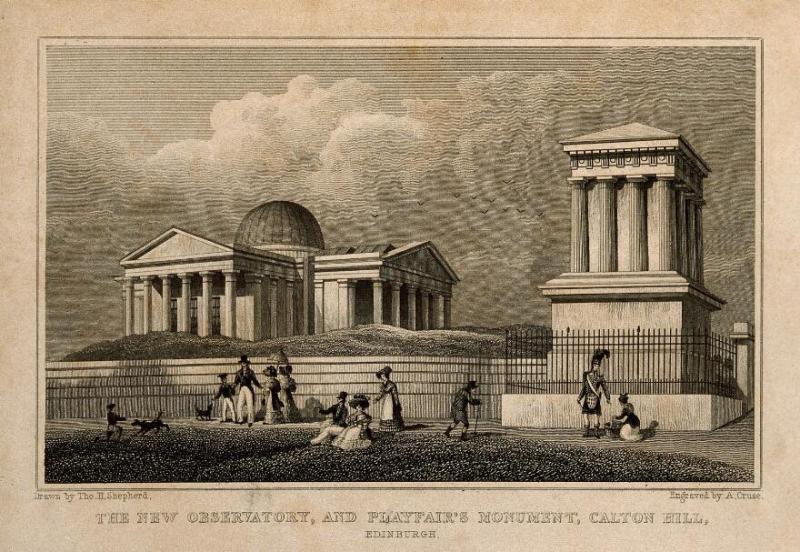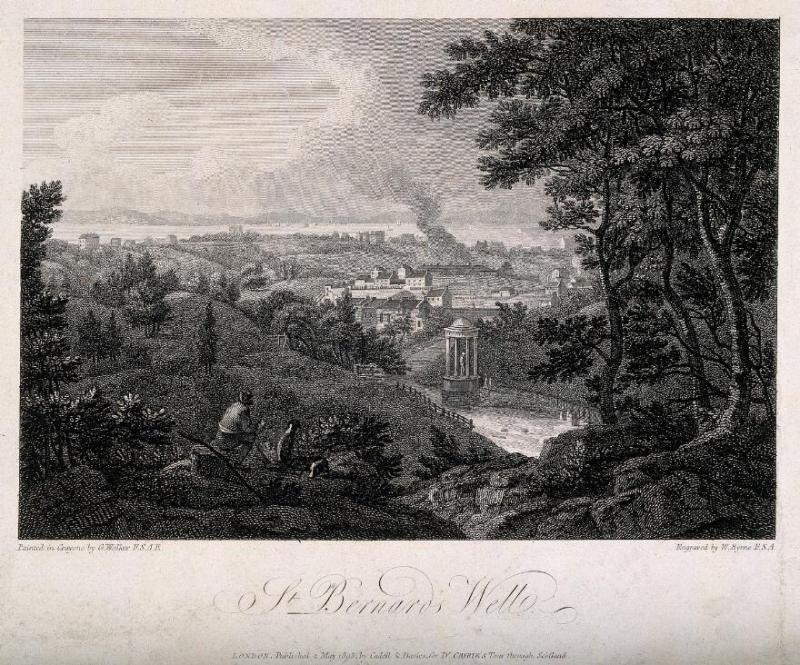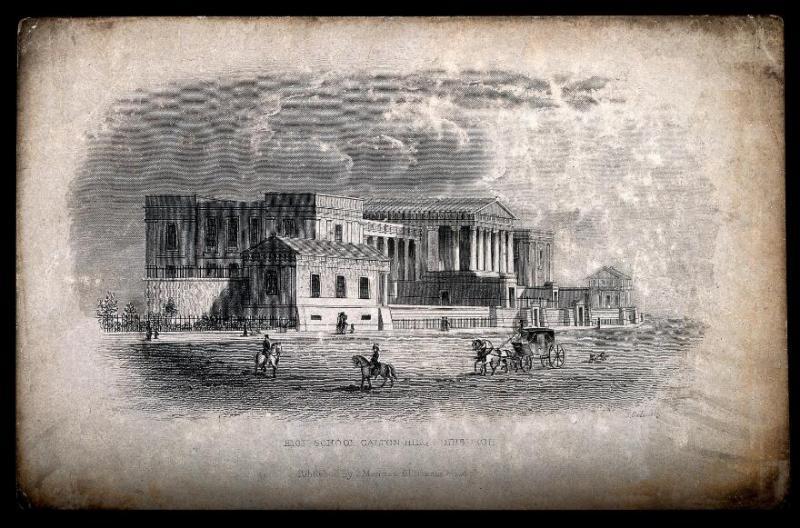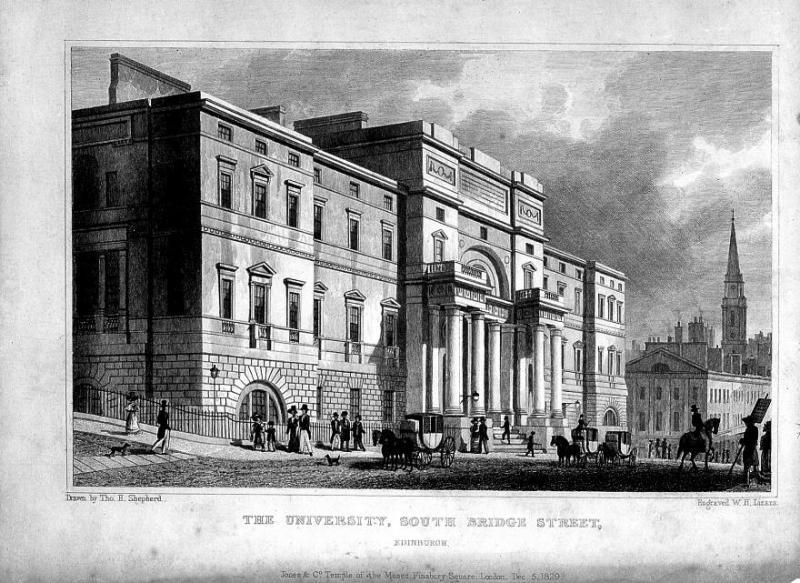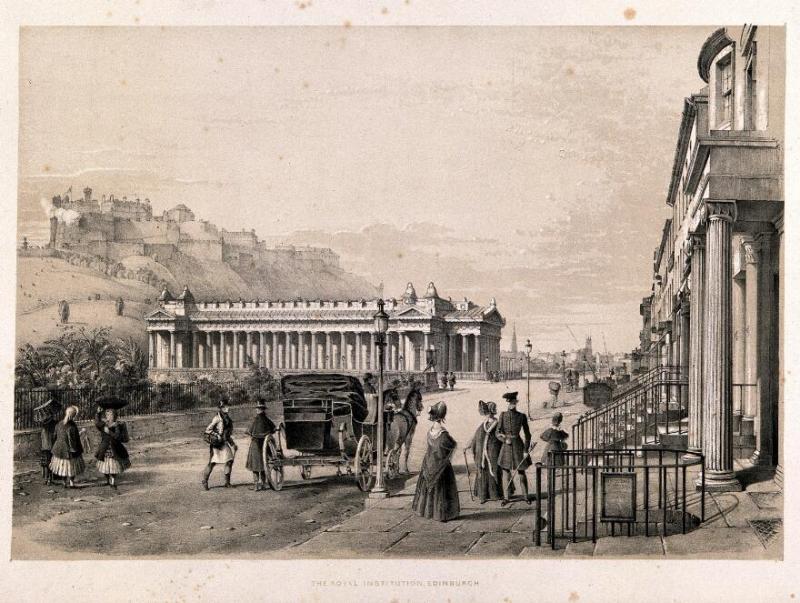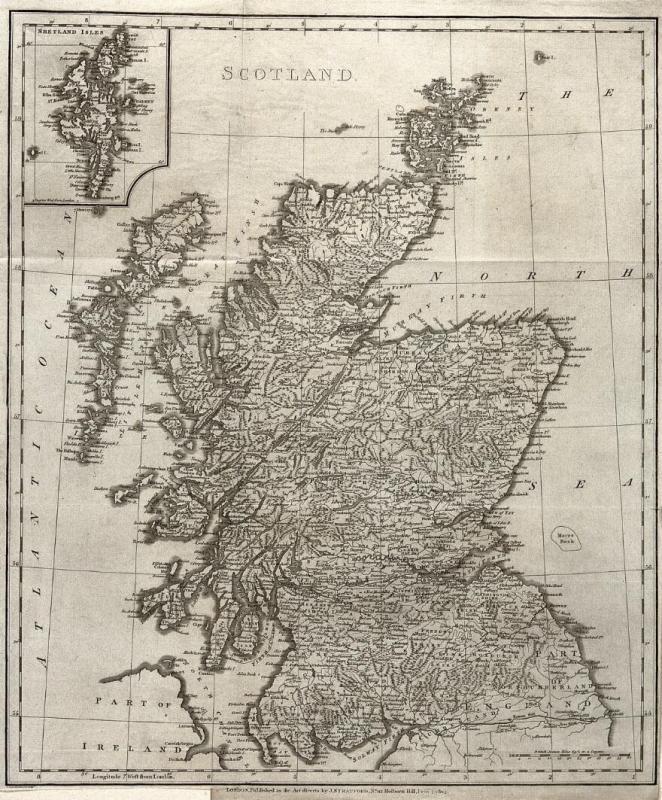Abstract
The Scottish Enlightenment is an epoch-making intellectual current within the European history of sociability. First, this is an exceptional blending of the theory and practice of sociable culture, which was rendered possible by refined urban settings in middle-scale cities, distinct from both London and Paris. Secondly, the Scottish Enlightenment unprecedentedly contributed to theorising sociability not only through systematic analysis of human social nature, but also writing philosophical or ‘conjectural’ histories of the development of human societies, which would at least partly be succeeded by historical sociology developed in the post-Enlightenment period.
In his 1742 essay ‘Of essay writing’, the Scottish philosopher David Hume gave a clue to the centrality of sociability to the intellectual and cultural life of the Scottish Enlightenment. While the pursuits of the ‘Learned’ required ‘Leisure and Solitude’ and ‘long Preparation and severe Labour,’ Hume wrote, the subjects that exercised the ‘conversible World’ could only be worked out in dialogue, mutual exchange, and – in short – society:
Such subjects of thought require not sufficient Employment in Solitude, but require the Company and Conversation of our Fellow-Creatures, to render them a proper Exercise for the Mind: And this brings Mankind together in Society, where every one displays his Thoughts and Observations in the best Manner he is able, and mutually gives and receives Information, as well as Pleasure.1
The passage reflects Hume’s positive evaluation not just of the pleasures but also of the intellectual value of sociability and polite conversation, along with his abiding admiration for those of a ‘sociable Disposition.’ Its mirror-image was Hume’s correspondingly negative verdict on those people and situations he termed ‘unsociable,’ a quality he encountered in London and elsewhere and which prompted a degree of melancholy that made life almost unbearable.2 But the passage also opens a window onto the wider subject of sociability and the Scottish Enlightenment. According to Nicholas Phillipson, one explanation for eighteenth-century Scotland’s intellectual effervescence lay in the distinctive modes of sociability forged in the nation’s debating clubs, universities, patriotic societies and commercial spaces in the wake of the 1707 Union. Even the outstanding individual achievements of philosophical legends such as Hume and his friend Adam Smith were forged via the stimulus of conversation and intellectual exchange in a range of private and public spheres in Scotland, as well as across Britain and in the cities and salons of continental Europe. Moreover, philosophical questions about human sociability were at the heart of the rich mixture of historical, theological, legal and economic writing produced in eighteenth-century Scotland. The issue of sociability was far more than a technical debate in moral philosophy, or a binary controversy about the primacy of selfishness or sociability in human nature. As much excellent recent work has demonstrated, sociability for the Scots impinged on discussions of everything from race and language to religion and empire – and much else besides.
- 1. David Hume, ‘Of Essay Writing’ in Essays Moral, Political, and Literary, ed. Eugene Millar (Indianapolis: Liberty Fund, 1994), pp. 1-2.
- 2. Hume to Hugh Blair and others, 6 April 1765. David Hume, The Letters of David Hume, ed. J. Y. T. Greig, 2 vol. (Oxford: Oxford University Press, 1932), vol. 1, pp. 495–499 (Letter 272).
The culture of sociability that was distinctive to eighteenth-century Scotland has often been traced to the political and cultural dislocations produced by the 1707 Anglo-Scottish Union. As Phillipson in particular has argued, the sense of trauma caused by the deprivation of Edinburgh’s status as the capital of an independent state stimulated new ways of thinking about patriotism, citizenship, and progress that had deep implications for both theories and practices of sociability.3 One dimension of this reorientation in the 1720s and 1730s was a growing interest in the language of politeness and urban sociability that had already been mapped in works like Joseph Addison’s Spectator (1711-12) and even Bernard Mandeville’s Fable of the Bees (1714; 2nd ed., 1723) – texts that many educated Scots read with avid interest. Another dimension was a retreat from the intellectual and political commitments of an earlier generation of civic-minded Scots and defenders of federal union like Andrew Fletcher of Saltoun, and an acceptance of Anglo-Scottish Union as an engine of commerce and ‘refinement.’ And yet another was the formation of a multitude of patriotic societies devoted to Scotland’s improvement, ranging from the most informal of convivial clubs to more formalised philosophical and professional societies such as the Select Society. Many of these were dedicated to the causes of Scottish economic and agricultural prosperity, to the refinement of manners and the culture of the mind, and to the understanding of the distinctive problems facing Scotland as a ‘dependent province.’ They were also locations in which intellectual friendships were cemented as well as laboratories for the ideas later expressed in print by those identified by James Harris as ‘men of letters.’4
It is worth drawing attention to the fact that the flourishing of the ‘arts and sciences’ in eighteenth-century Scotland was often experienced by contemporaries as a paradox. Traditional European thinking had assumed that politeness, arts, and sociability were dependent on the existence of a court culture, along with a deferential nobility and the type of salon culture that had developed in France.5 From a different perspective, figures like Andrew Fletcher had assumed that the loss of political independence would entail cultural damage too. The loss of political independence following the Union of 1707 was traumatic for many of the Scots, and even the majority of the moderate Scottish literati, who were largely Unionists and Hanoverians, felt obliged to respond to this enduring anxiety. Hume captured this apparent paradox in a famous letter to Gilbert Elliott of Minto of 1752:
Is it not strange that, at a time when we have lost our Princes, our Parliaments, our independent Government, even the Presence of our chief Nobility, are unhappy, in our Accent & Pronunciation, speak a very corrupt Dialect of the Tongue which we make use of; is it not strange, I say, that, in these Circumstances, we shou’d really be the People most distinguish’d in Europe?’ (Letters, vol.I, p. 255)
As Hume had already suggested, one clue to the resolution of this apparent paradox lay in the emergence of a distinctive culture of sociability in Scotland’s cities in the decades after 1707.
- 5. Daniel Gordon, Citizens without Sovereignty: Equality and Sociability in French Thought, 1670-1789 (Princeton: Princeton University Press, 1994).
One microcosm of this Scottish culture of sociability could be found in the city of Edinburgh, with its distinctive interactions between town and gown. It is probably a mistake to describe this civic culture in terms of a simple shift from the old court and aristocratic society of the seventeenth century towards a bourgeois ‘public sphere’: the networks of improvement linking the university with the church, legal profession and mercantile elites remained traditional in many ways, and there continued to exist powerful networks of aristocratic patronage linking Edinburgh to the worlds of London and the wider empire throughout the eighteenth century. But it is true that the many societies, clubs, coffee houses and taverns thriving in the small urban area of Edinburgh were ‘largely composed of professional men rather than aristocrats’ and that ‘many of the “lords” who figure in them were law lords who worked their way up through their profession’.6 Such societies and clubs include Rankenian Club (founded in 1717); the Select Society (instituted as a debating society in 1754); the Oyster Club (its openness and diversity was underlined by John Playfair); and the Philosophical Society of Edinburgh (the later Royal Society of Edinburgh). The diverse mixture and the equal membership of these societies can partly be explained by the absence of a royal court and influential politicians in parliament. In addition, this so-called political vacuum also explains the moderation and politeness characteristic of Scottish sociability, in contrast to the hustle and bustle of London.
- 6. Alexander Broadie, The Scottish Enlightenment: The Historical Age of the Historical Nation (Edinburgh: Birlinn, 2001 [2007]), p. 29; cf. Pittock, Murray, Enlightenment in a Smart City: Edinburgh's Civic Development, 1660-1750 (Edinburgh: Edinburgh University Press, 2018).
It is no less of a mistake to view Scottish sociability entirely through the prism of Edinburgh. Glasgow had by the 1750s forged a unique sociable culture whose distinctiveness lay largely in the active presence of a mercantile class engaged in the trans-Atlantic trade (notably in tobacco and slaves). This context was familiar to Adam Smith, who had been among the founders of Glasgow’s Literary Society in 1752 and whose Wealth of Nations was probably shaped by many accumulated conversations with Glasgow merchants in the more commercially-oriented Political Economy Club. Beyond Glasgow, the towns of Aberdeen and St Andrews were also centres of Enlightenment in Scotland, and these generated their own social clubs as well as their own distinctive intellectual traditions. Aberdeen is a case in point, with its own distinctive traditions of moral philosophy (George Turnbull and Thomas Reid), with its own Philosophical Society, and whose political and jurisprudential thought took on a more radical character in the 1770s and 1780s in the hands of such figures as James Dunbar, James Beattie and William Ogilvie.
While the Scots generally shared Hume’s positive evaluation of sociable conversation in these practical settings, there was far less consensus about how the principles of sociability related to human nature and politics. The latter subjects had been thrust to the centre of philosophical inquiry by the controversial arguments of earlier writers, like Thomas Hobbes or, more recently, Bernard Mandeville, that humans were not naturally vested with any sociable propensities or affections in what was sometimes called the ‘state of nature.’ This raised a set of further questions, prompted in part by the natural law theorist Samuel Pufendorf’s insistence that human need (indigentia) supplied a basis for society prior to the formal establishment of states. If humans were not naturally sociable, how had they become so? And what was the significance of sociability to what was increasingly thought of as the history of civil society?
These controversies played out across a wide-ranging Scottish debate about the question of human natural sociability that cut across otherwise shared commitments and positions. The divide between Francis Hutcheson and David Hume reveals the depth of possible disagreement on this issue between otherwise friendly interlocutors, with Hume politely but firmly rejecting Hutcheson’s emphasis on mankind’s natural sociability and ‘moral sense.’ The emphasis in Hume’s thought, and in that of his close friend Adam Smith, was rather on the processes by which partial and self-regarding humans acquired the moral and psychological resources required to live sociably. This was a theme already treated by Mandeville as well as earlier French theorists such as Pierre Nicole or Saint-Evremond, and Hume and Smith were both eager readers of this literature while seeking to distance themselves from Mandeville’s extreme and licentious conclusions.7 Hume certainly celebrated the forms of ‘deference and civility’ that were essential to the sociable ‘arts of conversation,’ but such refinements and politeness were less the result of natural sociability than of a long and arduous process of socialisation.8 Hume, like many of his contemporaries, ascribed a significant place to interactions between men and women in driving this process.9 Sociability and politeness, in this sense, were outcomes of an evolutionary moral history driven by selfishness and pride. Smith, for his part, did not deny that human nature was a compound of both selfish and sociable principles, but the emphasis in his moral and economic theory was on what has been called commercial sociability; that is, a secondary form of sociability stemming from interactions based on dynamics of sympathy and self-love.10 Smith’s alternative to natural sociability was not incompatible with his sustained interest in the formation of character and with an account of humans striving to achieve true praiseworthiness (virtue) rather than mere praise. Yet in place of Hutcheson’s tight linkage between natural sociability and mankind’s ‘moral sense,’ Smith derived the human capacity for moral discrimination and agency chiefly from refinements or modifications of self-love.
- 7. Hume quoted Saint-Evremond in the Enquiry; see Harris, Hume, 261.
- 8. Christopher Berry, ‘Sociality and Socialisation’ in his Essays on Hume, Smith and the Scottish Enlightenment (Edinburgh: Edinburgh University Press, 2018), chapter 5.
- 9. Hume, ‘Of the Rise and Progress of the Arts and Sciences’, pp. 70-73. On Hume and Mandeville, see Mikko Tolonen, Mandeville and Hume: Anatomists of Civil Society (Oxford: Voltaire Foundation in association with Liverpool University Press, 2013).
- 10. Istvan Hont, Politics in Commercial Society: Jean-Jacques Rousseau and Adam Smith, ed. Béla Kapossy and Michael Sonenscher (Harvard: Harvard University Press, 2015), pp. 9-11.
Smith’s Scottish contemporaries were far from accepting the apparent emphasis on self-love at the heart of Smith’s explanation of morality and sociability. Several of his readers, from Adam Ferguson and Thomas Reid to Dugald Stewart, complained that Smith’s account amounted to little more than a theory of good breeding or politeness, rather than an investigation into authentic morality (Hont 29-30). Others among the Scottish moderates, as Thomas Ahnert has demonstrated, insisted on the indispensability of revealed religion to the achievement of the true character of ‘moral culture,’ a stance that put them at odds with Smith’s effort to derive the moral sentiments from the social – and more thoroughly secular – dynamics of sympathy. As the clergyman and professor of rhetoric and belles-lettres Hugh Blair remarked in one of his sermons, mankind’s ‘social disposition’ could easily be ‘warped from its original purpose,’ serving effectively as a mechanism for the dissemination of licentiousness via the influence of ‘custom, fashion and example.’ Sociability in this sense required tempering by a ‘firmness in mind,’ which was reinforced by revelation and a devotion to God.11 Others, such as Smith’s successor as chair of moral philosophy at Glasgow, Thomas Reid, criticised in particular the Part III of the first edition of The Theory of Moral Sentiments and became more influential in Scottish moral philosophy and its expansion toward North America, replacing the allegedly too subjective (even if inter-subjective) founding of morality by Hume and Smith with the concept of common sense. Revising his book several times, Smith felt obliged to explain that his moral theory not merely explained human concern with external markers of esteem and approbation, but also dealt with authentic morality and internal motivation for virtue. Humans as ‘moral beings’ could develop their moral capacity to control their action from the perspective of other spectators, to such an extent that the actor's reference group finally became not so much the real spectators of her surroundings, as an ideal or 'impartial spectator'. Following moral judgments by this ‘man within’ or ‘conscience’, human actors always conscious of being spectated would not only show their acts morally good and right, but also would pursue ‘praiseworthiness’ whether or not those acts satisfy their desire to be socially recognised by real others.
- 11. Hugh Blair, Sermon XIX, ‘On Following the Multitude to Do Evil’, in Hugh Blair, Sermons, 4 vols. (London, 1794), pp. 400-421. See Thomas Ahnert, The Moral Culture of the Scottish Enlightenment, 1690-1805 (New Haven & London: Yale University Press, 2014), pp. 66-93.
Scottish discussions of human nature and the history of society that appeared in the three decades after the publication of Smith’s Theory of Moral Sentiments were still deeply preoccupied with the question of sociability. Adam Ferguson’s Essay on the History of Civil Society (1767) offered perhaps the most interesting variation on the theme. Responding to the radically stripped-back account of human nature in Rousseau’s Second Discourse, Ferguson’s account was distinctive not only for its insistence that humans had always associated in ‘groups’ or ‘tribes,’ but also for its emphasis on the unsociable side of human nature – the principles of ‘war and dissension’ – in promoting social cohesion. Ferguson’s contribution represents one of the most distinctive contributions to the debate for its emphasis on the role of energy, enthusiasm, and imagination in kindling the sociable bonds within society. However, the Scottish literature of the 1760s and 1770s was arguably also marked by two further preoccupations which, if not entirely novel, now moved centre-stage. The first, shared by Smith as much as by figures like Ferguson, Lord Kames, John Millar and James Dunbar, was the conviction that sociability had to be studied historically, and in the light of the expanding evidence of moral and cultural diversity among the world’s peoples. Even those who insisted on the naturalness of sociability followed the lead of Montesquieu in pursuing the question of how it was dramatically reshaped across societies by the influence of climate, geography, race, religion, and history.12 A crucial question for this generation was how historical processes of societal and political formation shaped practices of sociability in places as diverse as Pacific islands, central Asia, or the southern tip of Africa. Put differently, the question of sociability was never far from the surface in Scottish conjectural histories of civil society: divergent accounts of the evolution of authority and political institutions were always tied to rival accounts of sociability. Another key question for the generation writing between the 1760s and 1780s was the role played by women, marital customs and, more broadly, gender relations in fostering the refinement of sociability that many took as the hallmark of the civilising process. As recent work has shown, this was a theme taken up with particular aplomb by the Glasgow-based John Millar, whose own repositioning of gender and familial relations at the centre of the history of society was informed by his deep engagement with a wealth of Enlightenment writing on the peoples, customs and cultures of the Americas.13
- 12. For indications of how this programme was developed, see Silvia Sebastiani, The Scottish Enlightenment: Race, Gender, and the Limits of Progress (NY: Palgrave Macmillan, 2013).
- 13. Nicholas B. Miller, John Millar and the Scottish Enlightenment: Family Life and World History (Oxford: Voltaire Foundation, 2017).
In summary, the Scottish Enlightenment was an epoch-making intellectual current within the European history of sociability, in at least two senses: first, this was an exceptional blending of the theory and practice of sociable culture, which was rendered possible by refined urban settings in middle-scale cities, distinct from both London and Paris;14 and second, the Scottish Enlightenment unprecedentedly contributed to theorising sociability not only through systematic analysis of human social nature, but also writing philosophical or ‘conjectural’ histories of the development of human societies, which would at least partly be succeeded by historical sociology developed in the post-Enlightenment period.
- 14. Urbanity in Enlightenment Scotland is distinct also in its close relation to the activities of agricultural improvement in the countryside. Somewhat different from the case of the metropolis, intellectual and cultural improvers in Scottish cities were often landlords or their advisers dedicated to improving land productivity. See Brian Bonnyman, The Third Duke of Buccleuch and Adam Smith: Estate Management and Improvement in Enlightenment Scotland (Edinburgh: Edinburgh University Press, 2014).
Share
Further Reading
Allan, David, Virtue, Learning and the Scottish Enlightenment (Edinburgh: Edinburgh University Press, 1993).
Broadie, Alexander and Smith, Craig (eds.), The Cambridge Companion to the Scottish Enlightenment (Second Edition, Cambridge: Cambridge University Press, 2019).
Broadie, Alexander (ed.), The Scottish Enlightenment: An Anthology (Edinburgh: Canongate Press, 1997).
Dunyach, Jean-François and Thomson, Ann (eds.), The Enlightenment in Scotland: National and International Perspectives (Oxford: Voltaire Foundation, 2015).
Dwyer, John and Sher, Richard B. (eds.), Sociability and Society in Eighteenth-Century Scotland (Edinburgh: Mercat Press, 1993).
Hont, Istvan and Ignatieff, Michael (eds.), Wealth and Virtue: The Shaping of Political Economy in the Scottish Enlightenment (Cambridge: Cambridge University Press, 1983).
Sher, Richard B., Church and University in the Scottish Enlightenment: The Moderate Literati of Edinburgh (Edinburgh: Edinburgh University Press, 2006).
Smith, Craig, ‘A Hotbed of Genius: An Introduction to the Scottish Enlightenment’, Adam Smith Works, https://www.adamsmithworks.org/documents/introduction-scottish-enlightenment-craig-smith
Whatley, Christopher A., Scottish Society, 1707-1830: Beyond Jacobitism, towards Industrialisation (Manchester, UK: Manchester University Press, 2000).
Wood, Paul. (ed.), The Scottish Enlightenment: Essays in Reinterpretation (Rochester, NY: Rochester University Press, 2000). [Robertson, John. ‘The Scottish Contribution to the Enlightenment’.]
